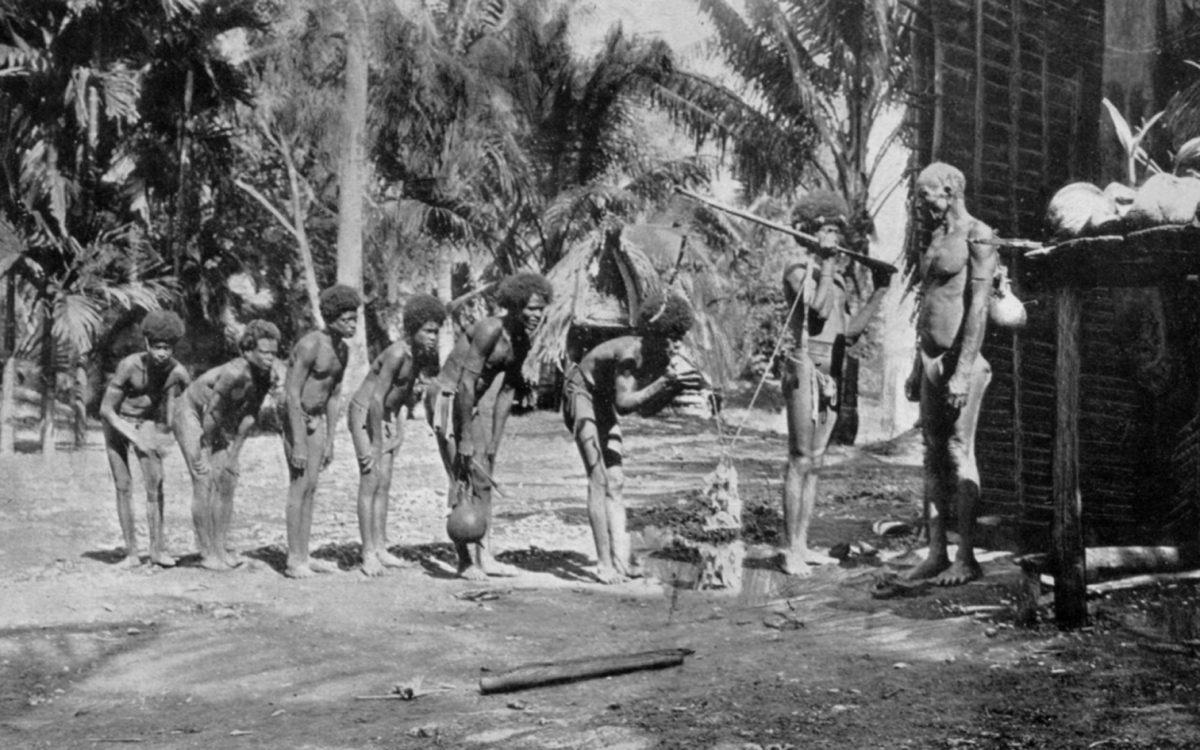The header image is a Ceremonial Act of the Kula, obtained from Argonauts of the Western Pacific (1922) by Bronisław Malinowski.
I consolidated the research phase of my master graduation project in a white-paper style piece. The project focussed on gift giving of music in a western society, which is deeply rooted in society and part of people’s cultural heritage. I wanted to enhance the ritual of gift-giving of giving digital media.
Gift giving has been part of society for ages. Where do our current rituals come from? Why do we give gifts? This essay might give some insights. I approached
Culture and values
Values motivate actions and values become infused with feeling when activated. (Schwartz, 1992) Core human values are the driving force behind motivation. Schwartz plotted these values in his Human Values Framework.

Keeping this mind, gifts are given during many occasions. People have two main motivations to give gifts: either agnostic – where the giver enhances him or herself in relation to the recipient – or altruistic – where the sole purpose is to deliver happiness to the recipient. (Sherry, 1983)
We can relate these motivations to the human values defined by Swartz. People giving with an altruistic motivation will most probably fit in the lower left of the framework, with benevolence as core value, since these values relate to finding fulfilment by connecting to social relations. Gift exchange is an effective way to find fulfilment in this area. The agnostic motivations could be related to the top right of the framework with power as core value, since these people focus on finding fulfilment within oneself.
Culture can be described as “the collective programming of the mind that distinguishes the members of one group or category of people from another”. (Hofstede, 2001) According to Hofstede, the Netherlands (and many more western societies) can be described as a highly individualistic culture. This makes designing for benevolence in our western culture an interesting challenge.
Psychology of giving
The perfect gift should contain a moment of surprise and should illustrate effort (Hassenzahl, 2012) or giver sacrifice. Generally, the most appreciated example is sacrifice of time. (Mayet & Pine, 2010) Next to this, a gift is a carrier of identity. At one end it communicates the identity of the giver, but at the other end it communicates the recipient’s identity according to the giver. (Schwartz 1967) A gift can operate as marker of similarity between partners (Cheal, 1987) , but also as way to express oneself.
An important part of the gift giving ritual is the principle of reciprocity: “a continuing balance of depth – … – insures that the relationship between the two continues, for gratitude will always constitute a part of the bond linking them” (Schwartz 1967) This continuing balance of depth can be defined in three steps: the obligation to give, to receive and the repay. (Mayet & Pine, 2010)
History of giving
Gift giving has been part of society for ages. Early socio- anthropological studies describe many interesting rituals for gift exchange throughout a variety of cultures. Here are two examples.
Taonga – Mauss also discusses the spirit of the thing given in the Maori culture. Gifts, or taonga, that Maori exchange are vehicles of spiritual power. The Maori traditionally speak of this as hau. (Mauss, 1967) The tradition says that in each gift, a part of the giver’s spirit is encapsulated. According to the Maori hau inclines that a gift ought to be returned to its giver, to fulfil the circle and bring the spirit to rest.
Kula – Bronisław Malinowski describes his travel to the Trobriant Islands, in Melanesia in his ethnographic work Argonauts of the Western Pacific (Malinowski, 1922) He stayed for several years, studying the indigenous culture. He tells about the complex institution of the Kula ring. Participant tribes travel at times hundreds of miles by canoe in order to exchange Kula valuables. These valuables have little inherent value, but the true value of each object lay in the renown of its former owners. The value of an object increases with each person that owns it.

Sociology
When looking back at our own society, similarities can be found with these indigenous rituals. In our gift economy the value of a gift is never in an inherent quality of an object, but is created in the process of making and exchange. (Simmel, 2004) This way it can implied that the economic value of a gift is of lesser value than the symbolic value. (Camerer, 1988)
From a phenomenological approach, it can be said that the meaning of things is not encapsulated in the objects themselves, but it exists in the relation between objects, (Merlau-Ponty, 2003) or in the relation between giver, recipient and gift.
When a gift is received, it is possible that the value of that gift to the recipient grows. We are able to create a special bond with the products around us. Some products can resonate with its owner through memories and interaction that fits, that is in sync. (Hummels, 2007) Different people bond with different gifts. However the diversity of digital products nowadays is minimal (Abram, 1997) , which makes it hard for us to find this fitting product.
